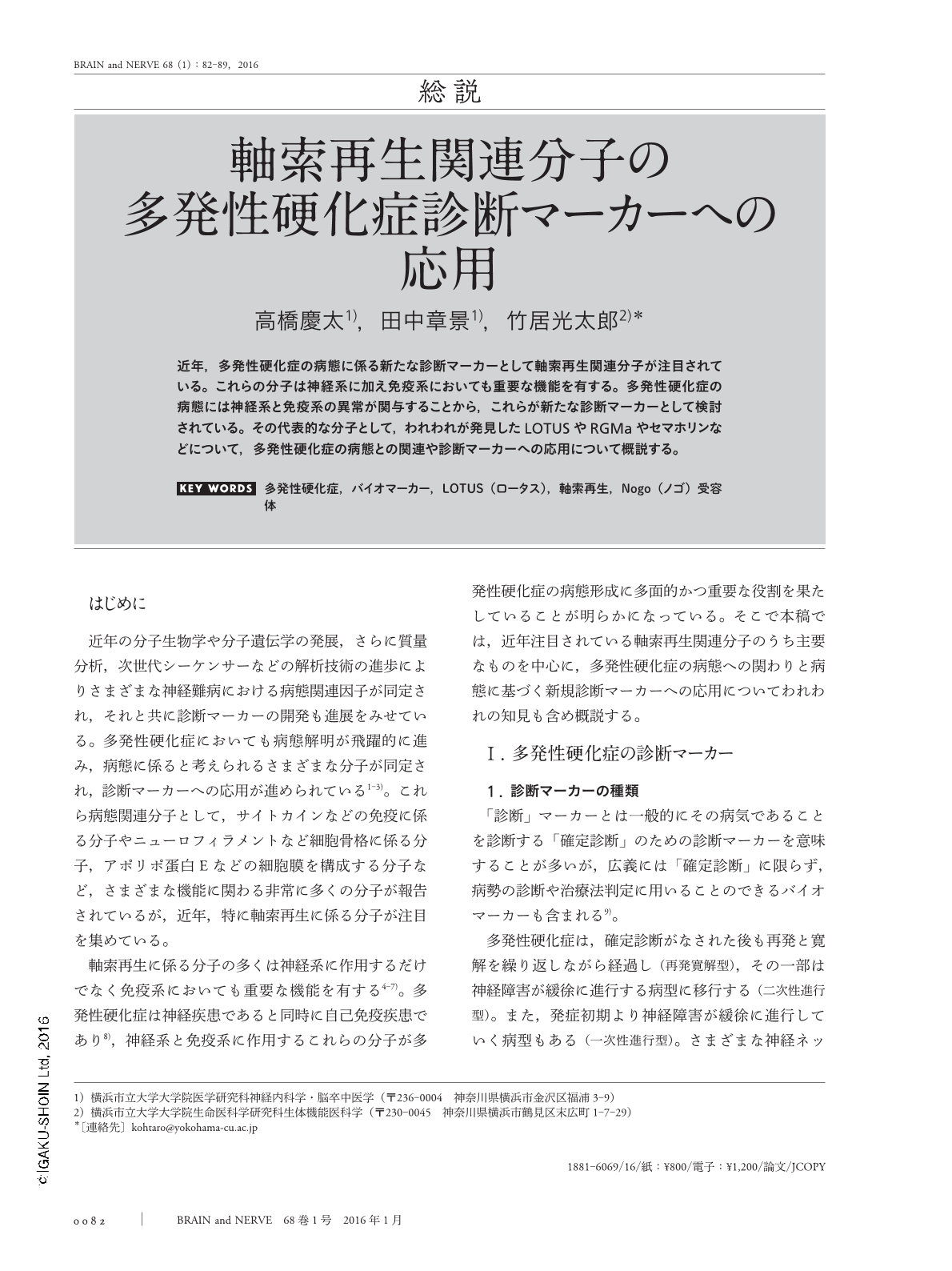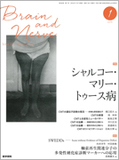Japanese
English
- 有料閲覧
- Abstract 文献概要
- 1ページ目 Look Inside
- 参考文献 Reference
近年,多発性硬化症の病態に係る新たな診断マーカーとして軸索再生関連分子が注目されている。これらの分子は神経系に加え免疫系においても重要な機能を有する。多発性硬化症の病態には神経系と免疫系の異常が関与することから,これらが新たな診断マーカーとして検討されている。その代表的な分子として,われわれが発見したLOTUSやRGMaやセマホリンなどについて,多発性硬化症の病態との関連や診断マーカーへの応用について概説する。
Abstract
Abnormalities in both the nervous and immune systems are thought to be relevant to the pathogenesis of multiple sclerosis (MS). Several functional molecules closely related to axonal regeneration play an important role in not only the nervous system, but also the immune system. Many recent studies revealed that these molecules are associated with the neurological and immunological aspects of the pathogenesis of MS. Therefore, we focused on these molecules as promising biomarkers for MS. Nogo protein and its receptor (Nogo receptor-1; NgR1) are well known representative molecules that prevent axonal regeneration, and we identified lateral olfactory tract usher substance (LOTUS) as an endogenous antagonist of NgR1. We found that LOTUS expression was decreased in the spinal cord in an experimental autoimmune encephalomyelitis mouse model and that variations in LOTUS concentration in the cerebrospinal fluid correlated well with disease activity in MS patients. On the other hand, previous studies have shown that repulsive guidance molecule-a and semaphorins, known to be involved in axonal guidance and regeneration, play a role in MS pathogenesis. We review the association of these molecules with the neurological and immunological aspects of MS pathogenesis, and we show that they are promising, clinically-relevant biomarkers for MS.

Copyright © 2016, Igaku-Shoin Ltd. All rights reserved.


